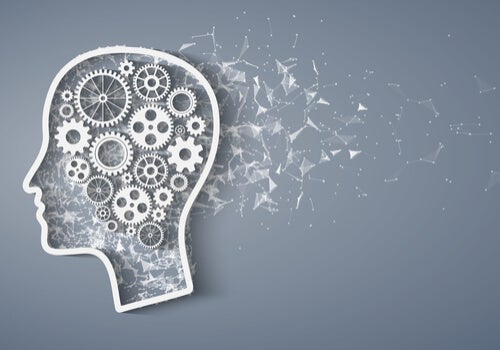Allan Paivio and His Dual Coding Theory


Reviewed and approved by the psychologist Sergio De Dios González
Dual coding theory is a cognitive theory Allan Paivio proposed in 1971. Its basis is the idea that mental imaging aids learning. Thus, this theory proposes that it’s possible to give it a boost. This is because it expands the study material through verbal associations and visual images.
Human cognition is a complex process capable of dealing simultaneously with the input of language and non-verbal objects and events. In accordance with Allan Paivio’s dual coding theory, the language system directly deals with linguistic input and output. All while using symbolic images to accommodate behaviors and events. Therefore, it has a double functionality.
“Human cognition is unique in that it has become specialized for dealing simultaneously with language and with nonverbal objects and events. Moreover, the language system is peculiar in that it deals directly with linguistic input and output (in the form of speech or writing) while at the same time serving a symbolic function with respect to nonverbal objects, events, and behaviors. Any representational theory must accommodate this dual functionality.”
-Allan Paivio-

The dual coding theory by Allan Paivio
According to Paivio, there are two ways in which a person can extend what they learn with verbal associations and visual images. Dual coding theory states that one can use both visual and verbal data to represent information. Visual and verbal information process differently and on different channels in the human mind, resulting in separate representations for the information in process on each channel.
The brain uses the mental codes corresponding to these representations to organize the incoming information it can store, retrieve, and even modify for later use. It can use both visual and verbal codes to remember information. Additionally, encoding a stimulus in two different ways increases the chance of recalling a memorized item.
There are three different types of processing within dual coding theory: representational, referential processing, and associative processing. In most cases, the subconscious requires all three forms when it comes to a particular task. In other words, a given task may require any or all of the three types of processing.
Paivio also postulates that there are two different types of representative units. The “images” for mental images and “logogens” for verbal entities. The organization of logogens happens in terms of associations and hierarchies. In turn, it organizes images in terms of part-whole relationships.
- Representational processing is when verbal or nonverbal representations directly activate.
- Also, the referential processing when the activation of the verbal system occurs by the non-verbal system or vice versa.
- In addition, associative processing when representations activate within the same system-verbal or non-verbal process.

Comments on dual coding theory
There’s some controversy regarding the limitations of Allan Paivio’s dual coding theory. For example, such a theory doesn’t take into account the possibility that cognition mediates by something other than words or images. In this regard, there’s not enough research to determine if words and pictures are the only way humans remember elements.
Another limitation of dual coding theory is that it’s only valid for tests in which people must focus on identifying how concepts come together. It’s much more difficult to use coding and remember the word at a later time if they can’t form associations between a word and an image. It limits the effectiveness of dual coding theory.
Furthermore, not everyone accepts this theory. Thus, John Anderson and Gordon Bower suggested the propositional theory as an alternative to how it mentally represents knowledge.
The propositional theory asserts that people store mental representations as propositions rather than images. Here, the definition of a proposition is the meaning that underlies the relationship between the concepts. This theory states that images are the result of other cognitive processes. This is because knowledge isn’t represented in the form of images, words, or symbols.
All cited sources were thoroughly reviewed by our team to ensure their quality, reliability, currency, and validity. The bibliography of this article was considered reliable and of academic or scientific accuracy.
- Clark, J. M. & Paivio, A. (1991). Dual coding theory and education. Educational Psychology Review, 3(3), 149-170.
- Paivio, A. (1971). Imagery and Verbal Processes. New York: Holt, Rinehart & Winston.
- Paivio, A. (1986). Mental Representations. New York: Oxford University Press.
- Paivio, A. & Begg, I. (1981). The Psychology of Language. New York: Prentice-Hall.
- Pylyshyn, Z. W. (1973). What the mind’s eye tells the mind’s brain: A critique of mental imagery. Psychological Bulletin, 80, 1-24.
- Reed, S. K. (2010). Cognition: Theories and application (8th ed.). Belmont, CA: Wadsworth Cengage Learning.
- Sternberg, R. J. (2003). Cognitive theory (3rd ed.). Belmont, CA: Thomson Wadsworth.
This text is provided for informational purposes only and does not replace consultation with a professional. If in doubt, consult your specialist.








